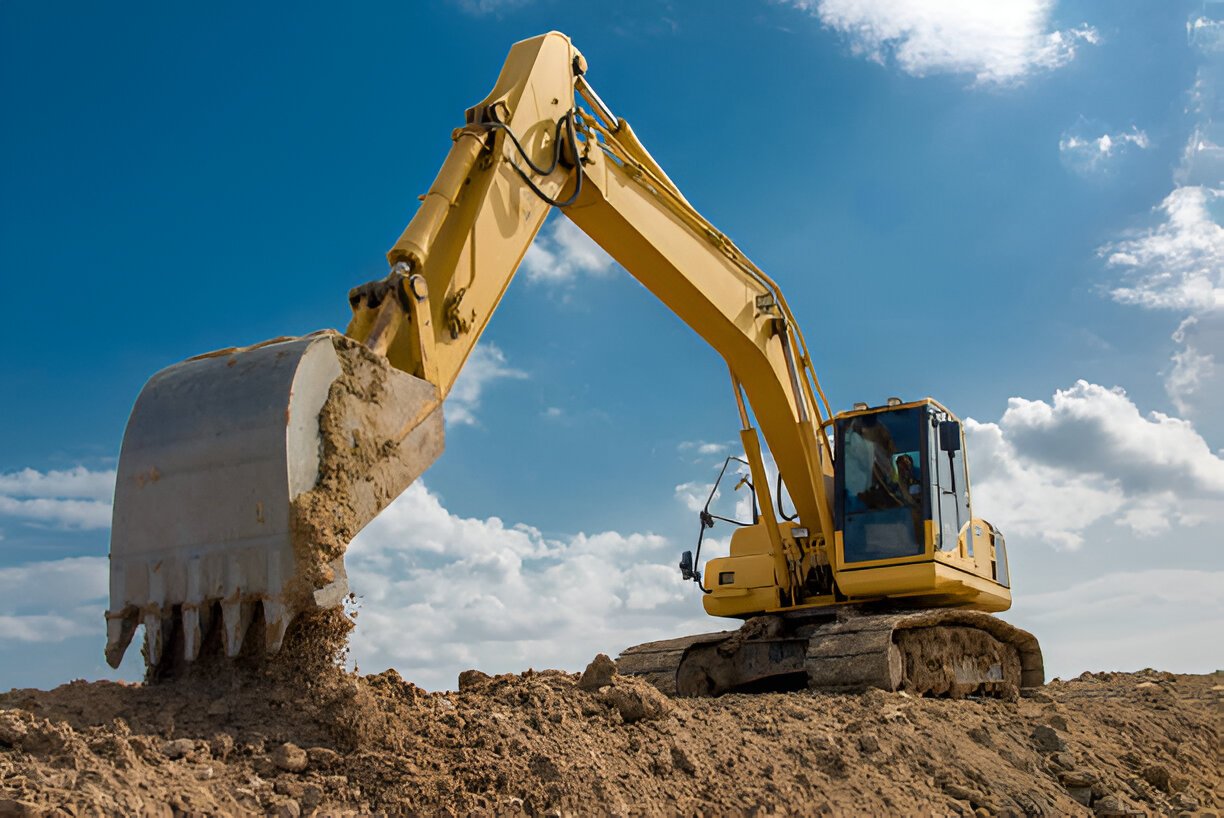
By Koushik Kotal
Mar 25, 2025
( 0 )
Excavator machines are vital for construction, mining, and infrastructure projects, offering versatility in digging, lifting, grading, and demolition. With different types such as crawler, wheeled, long-reach, suction, dragline, and skid steer, each excavator machines serves specific site needs. The mini excavator stands out for its compact size, making it ideal for confined spaces like backyards and urban areas. Choosing the right type of construction excavator machine enhances efficiency, safety, and cost-effectiveness while reducing risks and operational costs. From small-scale jobs to large projects, excavators ensure reliable performance across varied construction environments.
An excavator is construction machinery that helps in digging, lifting, and demolition purposes. An excavator is primarily used on construction sites, performing a wide range of heavy tasks with precision for delicate jobs.
The excavator consists of a boom, an arm, and a chassis. The boom is used to reach out to different locations. The arm connects the bucket to the boom, which is used for digging and scooping materials. It also has an undercarriage that comprises either tracks or wheels, which allows the excavator to move in different terrains. The operator is in the cab and operates every function of the equipment. Simply put, an excavator can excavate trenches, pick up bulky materials, grade ground, and destroy structures.
Excavators become extremely versatile with the assistance of special attachments. The equipment increases its usefulness by opening up its potential for a vast volume of other tasks aside from digging. The following are the most popular excavator attachments:
Excavation machines are essential for modern construction, mining, and infrastructure projects. Excavating equipment come in different types, each suited for specific terrains, tasks, and project requirements. Below are the most widely used types of excavator machines, along with their uses, benefits, features, and applications.
Equipped with tracks instead of wheels, crawler excavation machines have great stability and do not topple when moving over mud or hilly terrain.
Wheel excavation machines use rubber tires and are therefore more mobile and faster than those with tracks.
Small but highly efficient excavator machines for restricted sites and minor projects.
They have extendable booms and arms on these excavating machines to extend beyond normal models.
Dragline excavation machines are large, heavy-duty machines equipped with a long boom and a suspended bucket.
Also known as vacuum excavation machines, these use high-pressure airflow to remove soil and debris.
Compact and highly versatile excavation machines fitted with buckets or attachments.
Choosing the appropriate excavator for a construction application has numerous advantages, and most of these are very important in deciding whether or not a construction project will be successful.
Excavators come in different types, each suited for specific tasks in construction. Crawling excavators perform well in rough terrains, while wheeled excavators are perfect for smooth, urban environments. Mini excavators are ideal for confined spaces, whereas long-reach excavators offer extended reach for deep excavation or demolition.
Choosing the correct excavator will be of primary importance for achieving efficiency, safety, and cost efficiency for every operation. The correct machine minimizes the duration of work, decreases accident occurrences, and reduces operating expenditure.
Find the extensive range of excavators offered by Desi Machine. Investing in suitable machinery will enable you to increase production and achieve the optimal results for your site.
Excavators include crawler, wheeled, mini, long-reach, dragline, suction, and skid-steer models. Each type is designed for specific tasks like mining, roadwork, demolition, or utility installation.
Renting is best for short projects, while buying suits long-term, frequent use. The choice depends on budget, maintenance, and how often the excavation machine will be needed.
Common attachments are buckets, augers, breakers, grapples, clamps, couplers, compactors, and tiltrotators. These expand the capabilities of excavation machines for digging, drilling, demolition, and grading.
Operators should be trained, wear safety gear, and inspect the machine regularly. Marking underground utilities before digging helps prevent accidents with excavation machines.
Consider machine size, ground conditions, fuel efficiency, and compatible attachments. Choosing the right excavation machine ensures efficiency, safety, and cost-effectiveness.
An excavator is a heavy-duty excavation machine with 360° rotation for large projects, while a digger (backhoe) is smaller, versatile, and better for residential or farm work.
Govt Readies ₹13,000-Crore Incentive Plan to Boost Heavy Construction Equipment Manufacturing
© 2025 Desi Machines All rights reserved.
Designed & Developed by PromotEdge
Desi Machines is a platform where you can see and compare construction equipment. It showcases images, brochures, features, technical specifications, brand details & dealer information. All these are taken from respective brand websites, brochures, and other public resources. We do not claim ownership of these materials and strive to ensure their accuracy. However, the disparity may happen and we advise users to verify directly with respective brands and dealers. Desi Machines is not liable for any inaccuracies or reliance on the information provided. Use of this website is at your own discretion.